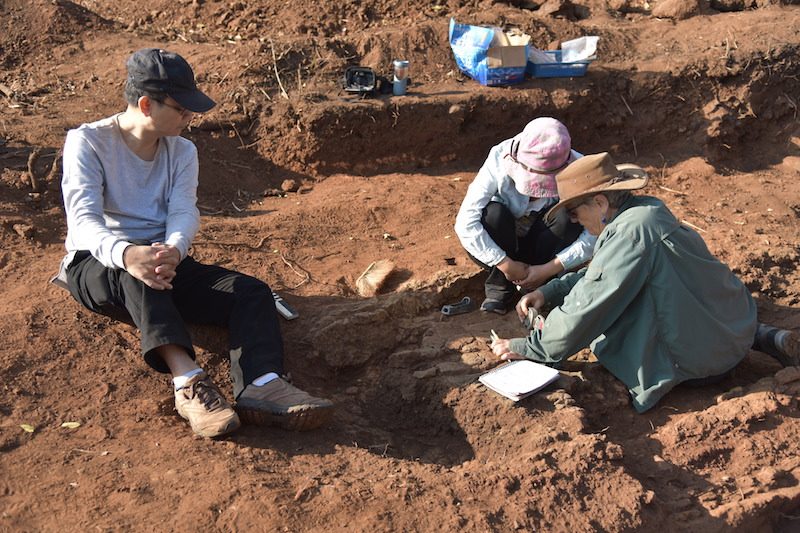Their motivation may not have been to support a sprawling political patronage network, but when the Khmer dominated the region about 1,000 years or so ago, one necessity of maintaining their empire was steady deforestation.
There were about 750,000 people to feed and house in the country’s capital alone—what is today Angkor Archaeological Park in Siem Reap province—meaning wood was needed to build and cook, said Mitch Hendrickson, a Canadian archaeologist at the University of Illinois at Chicago.

“There is no record of a specific management system for forest usage, but we presume they would have had one,” he said in an interview over the weekend.
The empire also required iron for weapons, tools and farming implements as well as for the metal joints used to support the temples that have come to define Angkor. And this involved a great deal of wood to fuel iron smelters, Mr. Hendrickson said.
He and archaeologist Phon Kaseka, director of Archaeology at the Royal Academy of Cambodia, have been leading an iron-smelter excavation in Preah Vihear province this month. One of their goals has been to collect samples to determine which tree species were used to make charcoal for smelting.
“For 1 ton of ore that you want to smelt…3 or 4 tons of charcoal is needed,” Mr. Hendrickson said. “So when you talk about that kind of scale and the production of tons and tons of iron—and remember, you may get 50 percent of iron out of ore if you’re lucky—you’re talking of tons and tons of trees that were turned into charcoal.”
The people of Angkor may have used different trees for different tasks, such as firing ceramics and casting bronze, which require wood rather than charcoal as the temperature required is lower, Mr. Hendrickson said.
He and Mr. Kaseka are now creating a database of samples collected during the dig, hoping that other researchers will join their effort to better understand tree use in Angkorian times.
Their excavation project in Rovieng district near Phnom Dek mountain has taken place at a mound of slag—the waste material that flows out of the smelter during iron ore production—that was 6 meters tall, 40 meters wide and 30 meters long: a small mountain of slag, as Mr. Hendrickson put it.
During the dig, which wraps up today, they uncovered three partially intact furnaces—the first ones from the Angkor era ever to be found whole.
Samples taken at different levels of the slag mound will enable researchers to more precisely determine when and for how long the site was used for smelting.
“We have to have very good age control,” said Quan Hua, a radiocarbon-dating specialist with the Australian Nuclear Science and Technology Organisation, who oversaw sample collection at the site.

Another scientist on the team, Lisa Tauxe, a geophysicist with the Scripps Institution of Oceanography in California, will also use the samples for magnetic field research.
“The magnetic field is generated at the center of the earth through motion of liquid iron in the core, 3,000 km down, very deep into the earth. But the exact process through which it happens is not understood perfectly because it’s very deep, very hot and under high pressure: We can’t get samples from there,” she said.
This magnetic field, which deflects radiation and protects the planet from solar wind, is fluctuating, Ms. Tauxe said. “The field is decaying now very quickly and…we need to understand how the field behaved in the past to understand what it will do in the future.”
“When things are fired, when they get very hot and cool down, they acquire a magnetic signal which is proportionate to the magnetic field…so they act like tape recorders of the magnetic field through time,” she said.
The slag and ceramic ovens found during the excavation are such recorders and, with Mr. Hua controlling data collection at the site, she said, “It could be one of the best dated sequences of the magnetic field: It doesn’t get better than that.”
The excavation team also included scientists from the Archaeomaterials and Alteration Prediction Laboratory in France. Over the next few months, they will compare samples from the dig with iron objects found at Angkor in order to piece together the iron supply route during the empire, said archaeometallurgist Stephanie Leroy.




